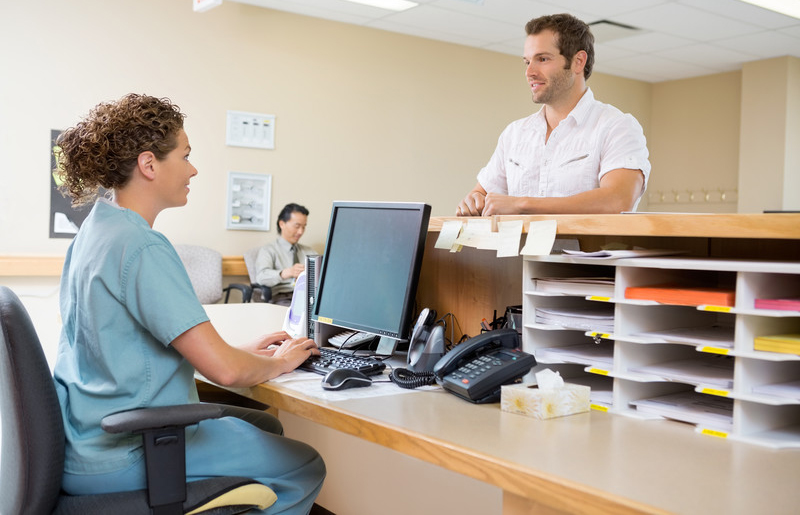The main objective of introducing the electronic health record is to transform to a unified healthcare system that ensures better quality care and enhances safety of patient data. But amidst its many benefits, the EHR system comes with its own share of shortcomings. While the conventional dictation and medical transcription company-assisted medical transcription allowed physicians plenty of face to face time with their patients, the EHR has burdened them with heavy documentation requirements. This has led to obvious patient dissatisfaction that many physicians are trying to overcome. Another reason for patient distress is the lengthy doctor’s appointment wait time.

According to a recent survey by Merrit Hawkins, a national healthcare search and consulting firm, patient wait time has increased 30 percent since 2014. The average wait time is 24.1 days in large metropolitan cities and 32 days in midsized metropolitan areas. In Boston it is 109 days, 122 days in New York for OB/GYN appointment, and in Philadelphia it takes 45 days. The one possible reason for this prolonged wait time is that 20 million Americans who obtained health insurance following the Affordable Care Act are able to get access to care they couldn’t afford earlier. People age 65 and older use more health services on average than younger people. Whatever the reason for lengthy wait time at the doctor’s, it causes considerable inconvenience to patients. Physicians should therefore take constructive measures to reduce wait time.
Following are some useful tips to reduce patient wait time.
- Lengthen your working hours: Usually a medical practice works from 8.30 am to 5pm. If medical practices decide to expend their working hours from 7 am to 6pm or 7pm, more patients can be treated. Expanding working hours will be useful for working patients who can visit the doctor in the early hours or during evening time. It is easier for medical practices with multiple doctors to expand working hours by splitting up additional hours; while a single-physician medical practice can expand working hours by adding hours one day a week.
- Get patient data before the appointment: Make sure to gather all patient data and insurance details before the patient arrives. Collecting all the data and keeping the paperwork ready before the appointment helps to prevent delay in patient check-ins.
- Use advanced technology: Using the latest efficient technology helps to shorten patient registration time. Usually it takes time to update personal information, make co-payments and wait for a receipt. But with efficient use of technology, patients can now make online payments. This helps to save time in patient check-ins. Investing in technology could be expensive but practices should look at technology solutions and measure their cost against saving patient wait time, employee cost and employee time.
- Experienced personnel to monitor all activities: Many industries employ a manager who monitors all operations and makes sure they run smoothly. Similarly, medical practices can employ an experienced and certified nurse or other personnel who can keep an eye on both the front desk and the clinical area to ensure that all functions are running efficiently. They can identify bottlenecks such as late arrival of patients or change of appointments etc., and also take necessary steps to resolve it.
- Create a policy for no-show and late arrivals: Late arrivals and no-show patients are common in any medical practice. So in case of late arrival i.e, if the patient is 30 minutes late, then ask him/her to reschedule the appointment. Charge a cancellation fee for repeat offenders. Give advance notice of these policies in the form of brochures or emails or messages to motivate patients to come on time.
- Assign trained staff for medical documentation: Appoint a professional typist or trained professionals to ensure quick and accurate medical documentation. Use a team care model to document medical records, collect patient history, manage prescriptions and test orders and also take notes at the time of patient visit. This will speed up administrative work and at the same time help ensure quality patient care.
- Secure messaging system: Access to secure messaging feature allows physicians to communicate with their patients. It increases office efficiency and improves patient satisfaction. It also helps to minimize phone calls and allows patients to access their doctor easily.
- Use of telehealth and mobile queue: Use of telehealth helps to cut down office visit time. Today, virtual treatment is becoming widely popular and it is more convenient for in-home physicians to access patients. This also helps prevent waiting time and travel time.
- A pleasant environment is necessary: Providing a clean and pleasant environment with reception and waiting area will not reduce patient wait time but it helps patients to occupy themselves. Comfortable furniture, pleasant music, a fish tank, incandescent lights etc can create a soothing ambience. Make sure to provide bottled water or coffee in the waiting room.
Long patient wait time can lead to unhappy patients and they tend to leave the medical practice and may not return again. The above mentioned recommendations could help minimize wait time. Physicians for whom EHR documentation proves difficult, can consider EHR-integrated medical transcription services for quick and timely documentation. Medical transcription companies provide HL7 interface that enables the transcribed physician’s notes to be entered into the EHR, enabling physicians to save time and provide services to more patients.


